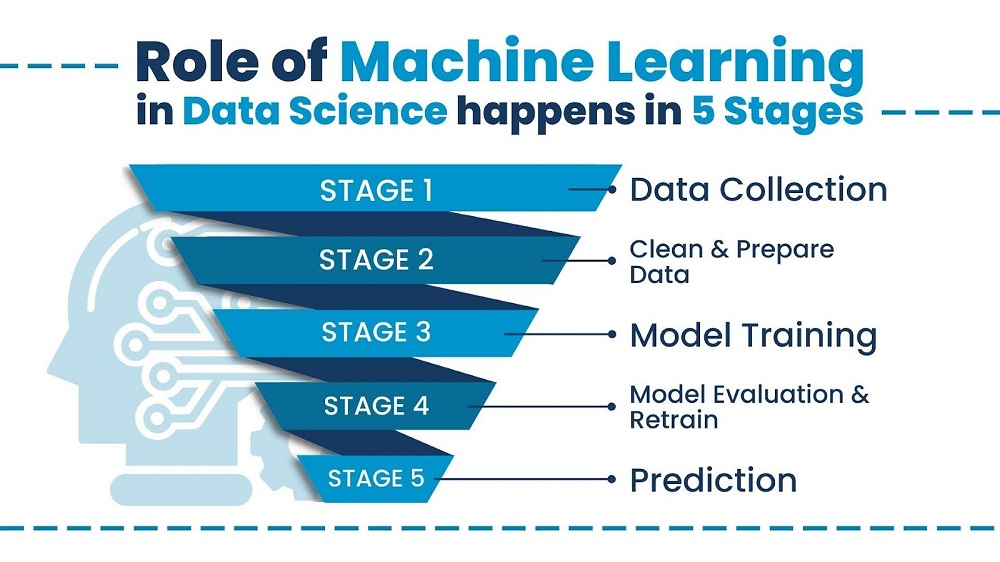The Role of AI and Machine Learning in Data Analysis
Introduction

Artificial Intelligence (AI) and Machine Learning (ML) have revolutionized the field of data analysis, enabling businesses and organizations to extract deeper insights, improve decision-making, and automate complex processes. With the growing volume of data, traditional data analysis methods are often insufficient. AI and ML bridge this gap by providing powerful techniques for handling large datasets, identifying patterns, and making predictions.
Understanding AI and Machine Learning in Data Analysis
What is AI in Data Analysis?
AI refers to the use of advanced computational techniques that enable machines to mimic human intelligence. In data analysis, AI helps in processing, organizing, and interpreting data efficiently. AI-powered systems can automate data collection, cleanse data, and generate meaningful insights without extensive human intervention.
What is Machine Learning in Data Analysis?
Machine Learning is a subset of AI that focuses on developing algorithms that can learn from data and improve over time. ML models analyze past data to detect trends, predict future outcomes, and uncover hidden relationships within datasets.
Key Applications of AI and ML in Data Analysis
1. Automated Data Cleaning and Preprocessing
Raw data often contains errors, missing values, and inconsistencies. AI-powered tools can automate the cleaning process by detecting anomalies, correcting errors, and filling in missing values, ensuring high-quality datasets for analysis.
2. Predictive Analytics
ML algorithms analyze historical data to predict future trends. Businesses use predictive analytics for:
- Customer behavior forecasting
- Market trend analysis
- Fraud detection
- Risk assessment
3. Pattern Recognition and Anomaly Detection
AI and ML can identify complex patterns within large datasets that are difficult for humans to detect. This is useful in:
- Fraud detection in financial transactions
- Identifying cybersecurity threats
- Monitoring healthcare data for disease detection
4. Natural Language Processing (NLP) for Data Analysis
NLP allows AI to analyze and interpret text data, making it easier to extract insights from:
- Social media trends
- Customer reviews and feedback
- Business reports and documents
5. Data Visualization and Reporting
AI-powered data visualization tools create interactive dashboards and reports that make it easier for businesses to interpret complex data. These tools generate real-time insights, helping decision-makers stay informed.
6. Personalized Recommendations
Machine Learning models power recommendation systems used by:
- E-commerce platforms (Amazon, eBay)
- Streaming services (Netflix, Spotify)
- Online learning platforms (Coursera, Udemy) These systems analyze user preferences to offer tailored content and product recommendations.
Benefits of AI and ML in Data Analysis
- Faster Processing: AI can process vast amounts of data in seconds, improving efficiency.
- Accuracy and Precision: AI reduces human errors in data analysis.
- Automation: AI automates repetitive tasks, freeing analysts to focus on strategic decision-making.
- Better Decision-Making: AI-driven insights help organizations make informed decisions.
- Scalability: AI models handle large-scale datasets, making them ideal for businesses dealing with big data.
Challenges of AI and ML in Data Analysis
Despite their advantages, AI and ML come with challenges, including:
- Data Privacy and Security Risks
- High Implementation Costs
- Bias in AI Models
- Need for Skilled AI Professionals
Conclusion
AI and Machine Learning are transforming data analysis by making it more efficient, accurate, and insightful. As technology advances, AI-driven data analysis will continue to evolve, offering new opportunities for businesses and professionals. Organizations that embrace AI and ML will gain a competitive edge in data-driven decision-making.
Want to integrate AI into your data analysis workflow? Start exploring AI-powered tools today!


